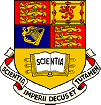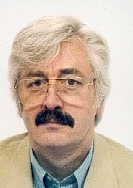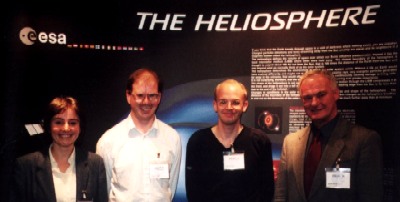
 |
|
News Page |

October 2000 Extra |
Latest news stories:Southwood Appointed to Top ESA JobUlysses 10 Years in Space |
 SPAT Staff Member Appointed to Top ESA Job
SPAT Staff Member Appointed to Top ESA JobA member of the group, David Southwood, who just returned from 3 years leave working in Europe and the USA, has been endorsed as the new Director of Science of the European Space Agency. He will take up the four year position, in succession to Professor Roger Bonnet, in the spring next year. David has been at Imperial for most of his career and was the first head of the Space and Atmospheric Physics research group when it was founded in 1986. He expects to retain some personal research links with the group after his move to ESA Headquarters in Paris, particularly with Michele Dougherty and Steve Kellock who will be running the Cassini spacecraft magnetometer science and operations.
Bob Forsyth 20th October 2000
 |
Imperial College participants in the ESLAB Symposium in ESTEC, Noordwijk, The Netherlands, on the 10th anniversary of the launch of the Ulysses spacecraft. From left to right: Dr. Silvia Dalla, Research Associate (energetic particles), Dr. Bob Forsyth, Co-Investigator of the magnetometer experiment, Dr. Geraint Jones, Research Associate (magnetic fields), and Prof. André Balogh, Principal Investigator of the magnetic field experiment and Co-Investigator of the COSPIN consortium of particle experiments. |
This month, we celebrate the 10th anniversary of the launch of the Ulysses space mission (see the SPAT, ESTEC and JPL web sites) which enabled the group to become one of the leading institutions in the world in heliospheric physics. The heliosphere, the vast volume of space around the Sun, has become a much more familiar region of the universe thanks to the unique, pioneering Ulysses space mission. The Ulysses spacecraft (pictures), built by the European Space Agency, was launched ten years ago, on 6 October 1990 from the Kennedy Space Center in Florida, onboard the Space Shuttle Discovery. Following a 14-month cruise to Jupiter, the spacecraft was deflected to place it into a near polar orbit around the Sun, with the objective to explore the three dimensional properties of the heliosphere.
Onboard Ulysses, there are two instruments built in Imperial College. The magnetometer, a joint effort between the College and the Jet Propulsion Laboratory, Pasadena, California, is led by André Balogh as Principal Investigator. A second instrument, the Anisotropy Telescope for measuring MeV energy proton fluxes in space, is part of the four-instrument consortium COSPIN, led by the University of Chicago. Our group has taken a leading role in the past ten years in research aiming to chart the structure and dynamics of the heliosphere in three dimensions, using the observations of our two instruments, and participating in numerous collaborations with other Ulysses investigators in Europe and in the USA. The group's tally includes about 250 scientific publications to date related to the heliosphere, several of these reporting important discoveries concerning the properties of the heliospheric medium.
In the past few years, Ulysses charted the heliosphere during the minimum activity phase of the solar cycle, but has now encountered, in its second orbit around the Sun's poles, the much more complicated structures related to the maximum in the Sun's 11-year activity cycle. Ulysses is now continuing its journey of discovery until at least to the end of 2004, when it is expected that its power source, the Radioisotope Thermoelectric Generator, will be nearing the end of its life.
André Balogh 10th October 2000
View Last month's news, older news or return to Space and Atmospheric Physics home page